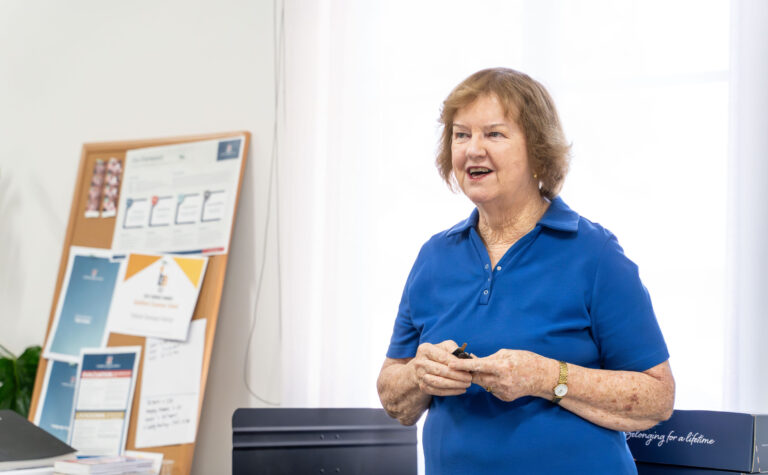The focus on the use of electronic devices and the importance of vigilant behaviour when online continues to be an essential consideration for both parents and educators. Cyber safety for teens is one of the key issues facing households throughout the world today. While cyber safety and device management are certainly not new or ground-breaking topics, they remain of critical importance. We must regularly reflect and revise as technology continues to play such a significant role in modern society.
Especially after school holidays, I know many families (mine included) probably face a few challenges returning to regularity and routines after the extended holiday break. Being a parent of a primary school-aged student, returning to a more consistent and early bed-time after the holidays is always difficult. For parents of teenagers, no doubt one of the biggest challenges will be scaling back device usage after the holiday break where, due to the absence of other activities such as school and sport, electronic device usage has the ability to rapidly take up a large chunk of the day.
The book iGen: Why Today’s Super Connected Kids are Growing up Less Rebellious, More Tolerant, Less Happy – and Completely Unprepared for Adulthood, by psychology professor Dr Jean Twenge, is rather confronting in some of the statistics that it presents, and also in its discussion relating to the rise of teenagers being required to attend ‘digital detox’ camps (now a growth industry in the USA) in response to digital addiction.
A couple of the key points that I took away, and seek to share with parents are:
- For teens, the negative side effects of screens start showing up after two hours a day of use during leisure time. The major problem with screen time is the duality of negative effects. Not only do the screens have a negative impact, but also the time consumed by screens has an opportunity cost (I am an Economics teacher!) as this time prevents teens from engaging in activities (e.g. exercise or spending time with friends) that actually make them happier.
- The vulnerability of younger developing brains is identified, with data indicating that teens who use electronic devices for three hours a day or more are 35% more prone to suicide (this study is based on data from the Monitoring the Future Survey which commenced in 1975 and has been tracking young people since this period).
- The survey also found that Year 8 students who spend 6-9 hours a week on social media are 47% less likely to be happy than those spending fewer than six.
In order to provide a comparative data point, Twenge used information from the app ’Moment’ (a free app that tracks active phone usage not including calls and music). Moment currently has been downloaded 4 million times and has over 850,000 active users. For users across all demographics, Moment reports that average phone usage time is 4 hours and 5 minutes per day, with users picking their phone up more than 50 times a day for non-call related activities. Certainly, average use at this level is alarming. For teenagers and children, spending so much significant time with screens is of great concern, primarily because their brains are still in the development stage. This is not to give adults a free pass for screen/phone usage – only to note that most adults were not inundated by this new level of hyper-connection with technology until much later in our lives when many of our social, cognitive and decision-making skills were already developed.
I was privileged enough to hear acclaimed neuroscientist, Baroness Susan Greenfield discuss the impacts of ‘hyperconnectivity’ (whether through social media or gaming) on adolescent development. Importantly she highlighted the threats that adolescent development faces due to excessive exposure to screen time, posturing that “Hyperconnectivity is a threat to humanity” because:
- Electronic media use reduces social contact.
- Heavy internet users lose the ability for facial emotive recognition which has effects on the development of their social skills and emotional intelligence.
- There is a deterioration in communication skills (words only make up 10% of communication).
- People now have an ‘audience’ rather than ‘friends’ – the purpose of the audience is gratification and approval rather than meaningful relationships.
Device usage is not all doom and gloom, and certainly it is a reality we are all forced to contend with. No one is arguing that electronic devices and the internet don’t provide a multitude of benefits to our lives through our ability to communicate more widely. What is important is our response to the expanded level of use, and as teachers and parents we must be vigilant in managing that use until we are confident that the young people we work with are at a point of responsibility.
The start of the academic year is always a very good time to discuss these matters at a school and family level.In my experience the key to successful digital behaviour has to be centred on keeping the discussion open with young people. Often, they can be scared to be honest about their online/screen time activities for fear of losing privileges related to device use, so as adults we need to maintain an approach focused on education, care, support, role modelling and equipping students with the skills for good decision making. If we can do this, we will be able to make inroads to help our students navigate through a very new and tricky frontier.
At Guildford Grammar School, we are committed to building strong and meaningful relationships between students. Staff and families. Grounded by our Anglican faith, our shared values nurture students to grow in all aspects of their lives. To learn more about the Guildford difference and discover more helpful information, please sign up to our newsletter.

NB: This article was originally published in 2018 and statistics were accurate at date of publishing.






